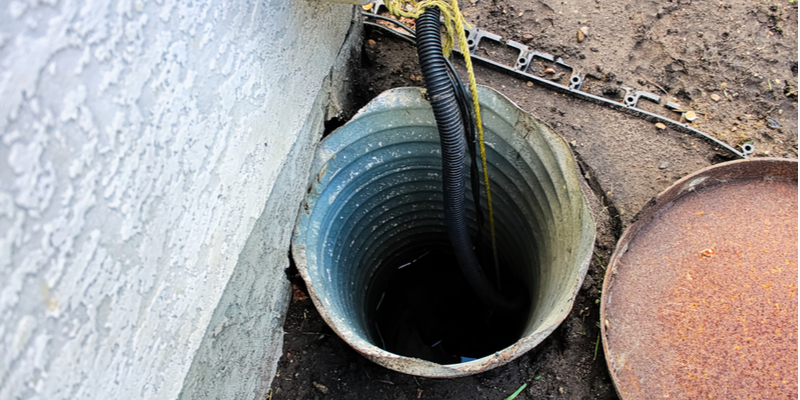The Comprehensive Guide to Caring for a Sump Pump
The Comprehensive Guide to Caring for a Sump Pump
Blog Article
Presented here underneath you can find a bunch of exceptional material involving Steps to Cleaning Your Sump Pump Properly.

Sump pumps are important elements in many homes, particularly in locations vulnerable to flooding or extreme dampness. They aid stop water damages by efficiently removing excess water from basements or crawl spaces. Nevertheless, like any other device, sump pumps require normal maintenance to ensure they work properly when needed the most. Cleansing your sump pump is an essential part of its upkeep, and understanding exactly how to do it properly can save you from expensive repair work and possible catastrophes.
Introduction
Keeping a tidy sump pump is crucial for its correct functioning and durability. Disregarding this crucial job can lead to obstructions, malfunctions, and ultimately, water damages to your home. Consequently, finding out how to clean up a sump pump is essential for property owners that count on these tools to maintain their cellars dry and secured.
Indicators of a Dirty Sump Pump
Knowing when your sump pump requires cleaning is essential for stopping prospective breakdowns. Some common signs that show a dirty sump pump include weird sounds throughout procedure, reduced water flow, and noticeable particles in the pit. If you notice any of these signs, it's necessary to clean your sump pump immediately to prevent any type of additional issues.
Getting ready for Cleaning
Before you start cleaning your sump pump, it's vital to take some safety precautions. Beginning by shutting down the power to the pump to avoid any kind of electric accidents. In addition, wear ideal protective gear, such as gloves and safety glasses, to protect on your own from dirt, debris, and possible pathogens.
Comprehending the Sump Pump
Before diving right into the cleansing process, it's necessary to have a standard understanding of exactly how a sump pump functions. Commonly installed in a pit or basin below the basement floor, a sump pump consists of several essential elements, including a pump, a float switch, and a discharge pipe. When water accumulates in the pit, the float button activates the pump, which then pumps the water out with the discharge pipe, far from the structure's structure.
Detailed Guide to Cleansing a Sump Pump
Turning off the Power
Begin by detaching the power supply to the sump pump to stop any type of accidents while cleansing.
Checking for Appropriate Performance
Before reinstalling the pump, perform a fast examination to make certain that the float button turns on the pump properly. Pour some water into the sump pit and observe the pump's procedure. If everything is operating properly, you can reconstruct the pump and reconnect the power supply.
Removing Particles and Dirt
Make use of a bucket or an inside story to eliminate any type of visible particles, dust, or debris from the sump pit. Dispose of the debris effectively to avoid it from clogging the pump or the discharge pipe.
Cleaning up the Pump and Drift Switch
As soon as the pit is clear of debris, meticulously remove the pump from the pit. Examine the pump and the float button for any type of indicators of damage or wear. Make use of a soft brush or cloth to clean up the surface areas and remove any type of accumulated crud.
Flushing the System
After cleansing the pump and float button, flush the sump pit with tidy water to eliminate any continuing to be dust or sediment. This will certainly assist make sure that the pump operates smoothly and successfully.
Maintenance Tips to Keep Your Sump Pump Clean
In addition to regular cleaning, there are several upkeep suggestions you can comply with to maintain your sump pump in optimum problem:
Final thought
Cleaning your sump pump is an important aspect of its maintenance and ensures that it runs effectively when you need it the most. By following the steps outlined in this guide and including routine upkeep into your routine, you can expand the life expectancy of your sump pump and shield your home from water damages.
6 STEPS ON HOW TO CLEAN A SUMP PUMP PROPERLY
UNDERSTANDING SUMP PUMPS
Your sump pump plays a crucial role in protecting your home by managing and removing excess water. It primarily functions as a “shield”, guarding your basement against the damaging effects of water accumulation. The pump is housed in a sump pit in the lowest part of your basement, and its job is to pump out any water that collects there.
During heavy rainfalls or when snow melts rapidly, water can infiltrate your basement, posing potential risks like flooding, structural damage, and harmful mold growth. Here, the sump pump springs into action, pumping out the intruding water and directing it away from your home.
SAFETY FIRST
Before cleaning, remember to prioritize safety. Disconnect the sump pump from the power source to prevent any accidental electric shocks. Also, wear sturdy gloves to protect your hands from any sharp or dirty components within the pump.
REMOVE THE SUMP PUMP
After ensuring your safety, the next step is to remove the sump pump from its pit. Doing this might require careful maneuvering as you don’t want to damage any pump components. Once removed, clean the sump pit to remove any accumulated debris or sludge.
INSPECT THE PUMP
Inspect the pump for any visible signs of wear or damage. Check the power cord, float switch, and impeller housing. If any components look worn out or damaged, consider replacing them to ensure optimal performance.
CLEAN THE PUMP
Thoroughly clean the pump with warm, soapy water. Make sure to rid it of any dirt, gravel, or other debris that might impede its performance. You can use a toothbrush to clean the small, hard-to-reach parts of the pump.
REINSTALL THE SUMP PUMP
Reinstall the pump into the sump pit Make sure it’s positioned correctly to remove the water effectively Once it’s back in place, reconnect it to the power source TEST THE PUMP
Finally, pour some water into the pit to ensure the pump works correctly. It should start automatically and begin pumping out the water; if it doesn’t, check the power source and the positioning of the pump.
Remember, while cleaning your sump pump is an essential part of home maintenance, hiring a professional plumber for a thorough inspection and cleaning at least once a year is also important. This will ensure that your pump is in optimal condition, ready to protect your home from potential water damage.
BEST PRACTICES FOR CLEANING SUMP PUMP DISCHARGE PIPES
Regular Inspection: Regularly inspect your discharge pipes, especially during heavy rainfall or snowmelt periods. Look for any signs of blockage or damage. Early detection of problems can prevent serious issues down the line. Periodic Cleaning: Over time, sediment and debris can accumulate in the discharge pipes, impeding the flow of water. Regular cleaning helps keep the pipes clear and functioning efficiently. You can use a high-pressure water jet to effectively clean the pipes. Insulation During Winter: In colder climates, discharge pipes can freeze, blocking the outflow of water. Protect your discharge pipes from freezing temperatures by insulating them with foam pipe insulation. This will ensure the sump pump can continue to discharge water even in freezing conditions. Proper Positioning: The discharge pipe should be positioned to direct water away from your home’s foundation. Improper positioning can lead to water seeping back into the basement. Ensure the pipe is long enough and angled correctly. Installation of a Check Valve: A check valve prevents water from flowing back into your sump pit after the pump has pushed it out. Installing a check valve helps maintain the efficiency of your sump pump and reduces the risk of flooding. Minimize Pipe Turns: Every curve or turn in the discharge pipe can decrease the efficiency of water flow. By minimizing turns and bends in your discharge pipe, you can increase the efficiency of your sump pump. https://www.fullspeedplumbing.com/how-to-clean-a-sump-pump-properly9999/

I was shown that article on Steps to Cleaning Your Sump Pump Properly from an associate on another site. Enjoyed reading our article? Please quickly share it. Let others check it out. I am grateful for being here. Please pay a visit to our website back soon.
Estimate Report this page